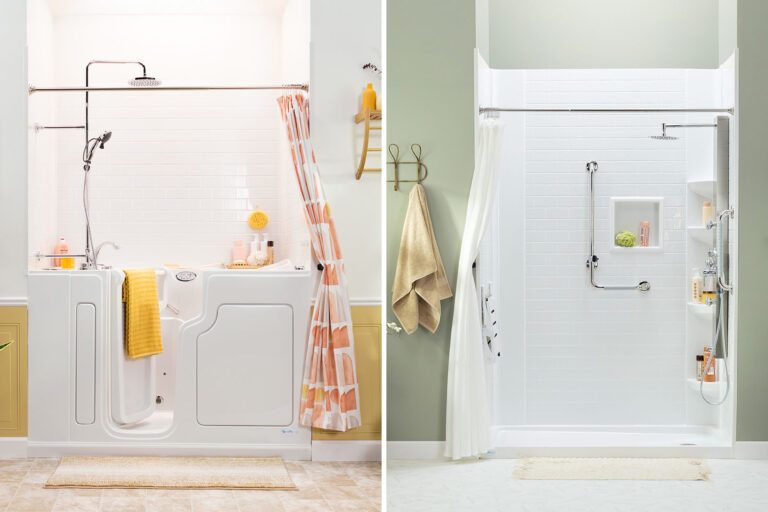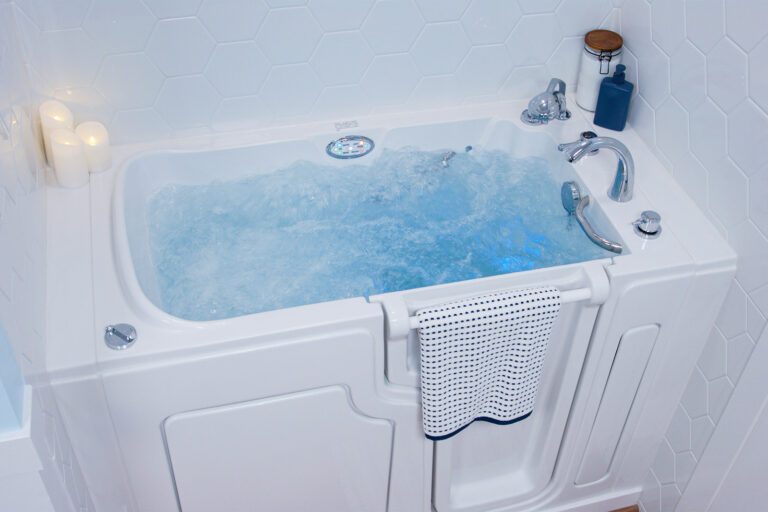Walk-In Tubs vs. Traditional Tubs: Let’s Compare
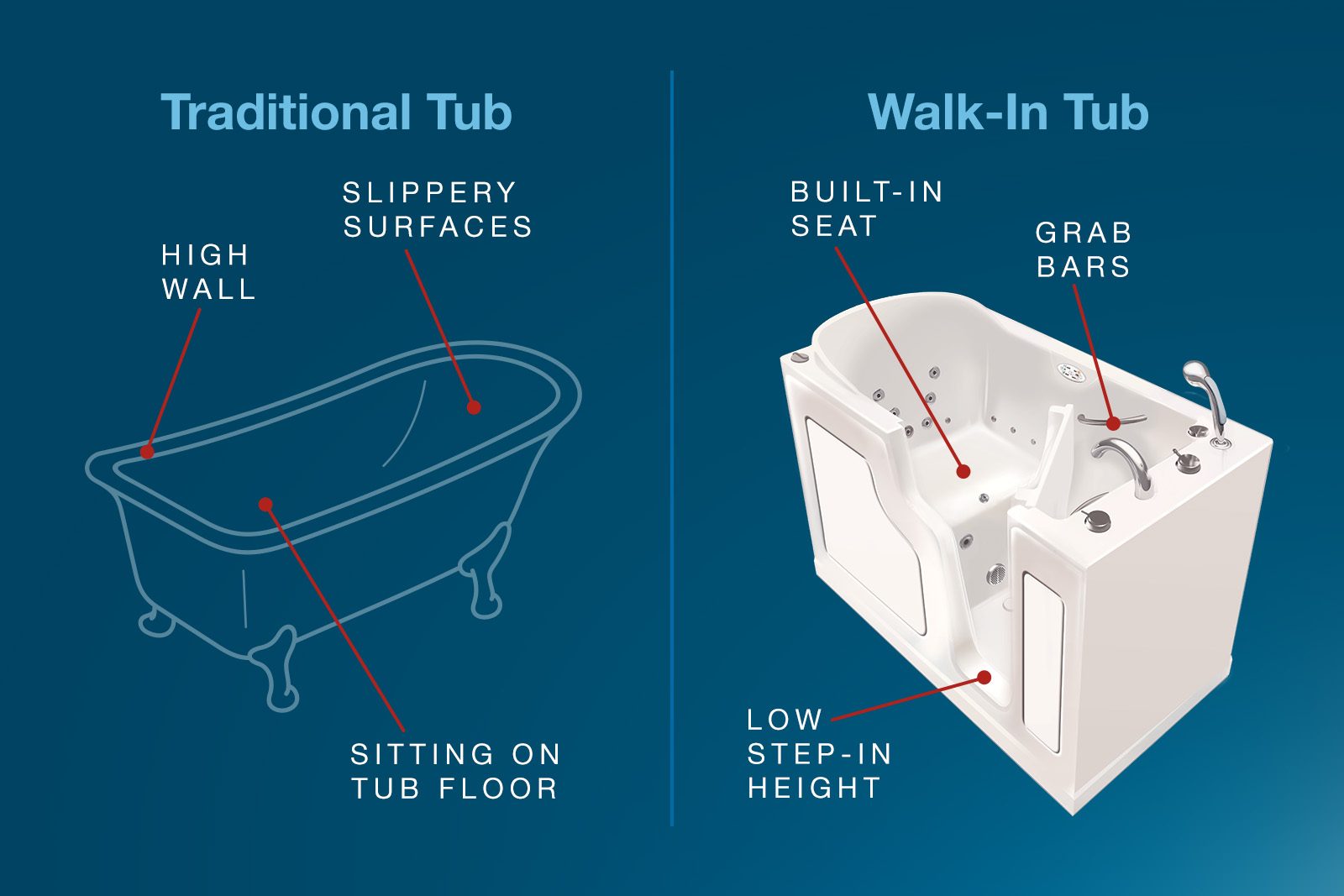
Choosing the right bathtub can make a big difference in your daily life, especially as you get older or experience mobility challenges. If your traditional bathtub becomes difficult to step into or you want more comfort features to soothe aches and pains, it might be time to consider a walk-in tub.
To determine which option is best for your needs and lifestyle, take a closer look at the key differences and benefits between walk-in tubs and traditional bathtubs.
What Is a Walk-In Tub?
A walk-in tub is specially designed to make bathing safer and more accessible for seniors and people with limited mobility. Many have advanced features that help you bathe independently and comfortably at home.
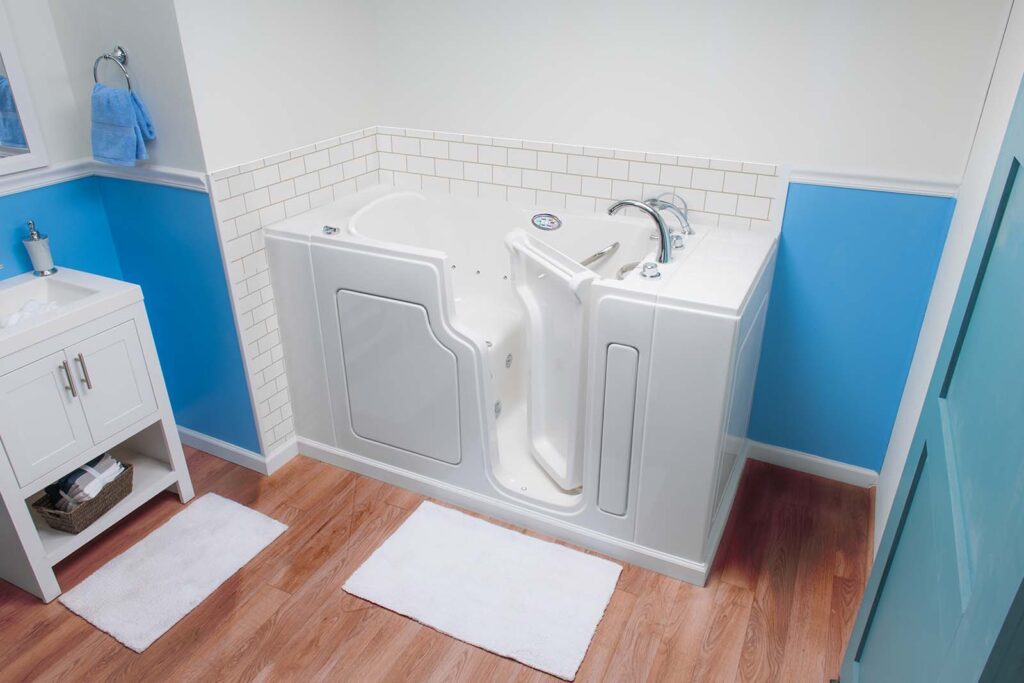
What Is a Traditional Bathtub?
You’ll find traditional bathtubs in most homes. Their simple, functional design makes them a great option if you just need a standard bathing setup without any additional safety features or accessories. While they may not offer the same level of security or therapeutic benefits as walk-in tubs, these classic tubs remain a versatile, stylish and practical choice for the average bather.
How Do Walk-In Tubs and Traditional Bathtubs Compare?
To help you make an informed decision between the two, explore how walk-in tubs and traditional tubs stack up across important factors like accessibility, sizing, features, cost and installation.
Click on each of these key differences in the comparison table below to dive into the details.
| Air Tub | Whirlpool Tub | |
|---|---|---|
| Accessible Design |
|
|
| Sizing & Dimensions |
|
|
| Therapeutic Features |
|
|
| Cost Difference |
|
|
| Installation Process |
|
|
Accessible Design
One of the primary advantages of walk-in tubs is their focus on accessibility and safety. Unlike traditional tubs built for basic bathing routines, they aim to increase stability and ease of use for bathers of all mobility ranges.
Most notably, walk-in tubs boast safety features like the ultra-low threshold, wide door, anti-slip floor and seat and built-in grab bars that provide an easy, secure step into the bath without having to lift your legs over the high ledge of a traditional tub. Once inside the walk-in tub, you can find additional support from convenience features like a no-strength locking handle and handheld shower wand to bathe without strain.
Without these accessibility features, traditional bathtubs can’t give seniors and people with limited mobility the safety and peace of mind they deserve while bathing.
“Walk-in tubs are a great option for people who are looking for increased safety and accessibility in their bathroom,” says Craig Dauffenbach, CEO of Safe Step Walk-In Tub Co. “They can help people maintain their independence and improve their overall quality of life.”
Sizing & Dimensions
When choosing between a walk-in tub and a traditional tub, consider their dimensions to ensure the right fit for your bathroom layout and personal bathing preferences.
Walk-in tubs sizes are designed to fit within the same footprint as a traditional bathtub, making them a seamless replacement option. They generally come in three sizes:
- The standard model measures 51 inches long by 28 inches wide
- The compact option measures 47 inches long by 28 inches wide
- The large tub measures 53 inches long by 31 inches wide
Traditional bathtubs, on the other hand, offer more variety in shape, layout and size. Dimensions of popular styles include:
- Alcove tubs, the most common style, measure around 60 inches long, 30 inches wide and 14 to 16 inches deep.
- Drop-in tubs range from 45 to 72 inches long, 30 to 32 inches wide and 14 to 20 inches high
- Freestanding tubs range from 55 to 72 inches long, 27 to 32 inches wide and 15 to 20 inches high.
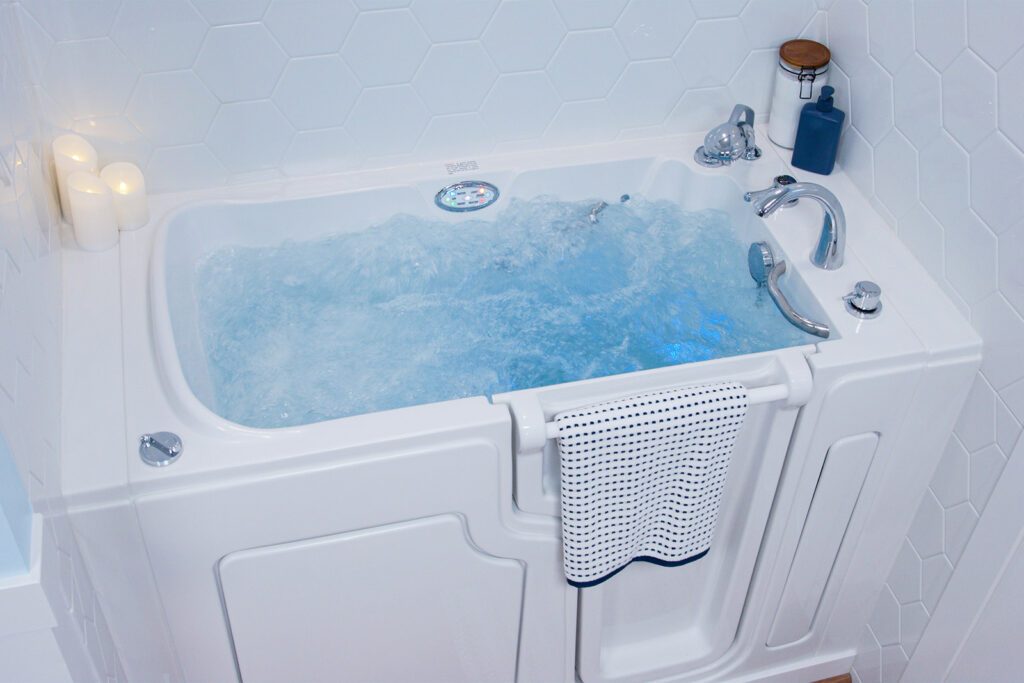
Additional Therapeutic Features
While traditional tubs provide a basic bathing experience, they simply can’t match the level of comfort and relaxation that walk-in tubs offer. These specialty tubs not only deliver on safety but also come packed with therapeutic features that elevate your daily soak into a truly relaxing and rejuvenating self-care ritual.
You’ll pamper your body from head to toe with restorative air and whirlpool jets that hydrate your skin and gently massage your aching muscles. For an even more immersive sensory experience, turn on the chromotherapy and aromatherapy systems to reap the full healing power of a walk-in tub.
Interested in a bath and shower combo? You can easily add the convenience of a standing shower to your walk-in tub with a rainfall shower head.
Enjoy $1,500 Off Your Walk-In Tub + Free Toilet, Including Installation!*
Request a free quote today!
Cost Difference
While there’s an initial cost to upgrade from a traditional tub, a walk-in tub stands as a smart investment when you consider the improved quality of life and peace of mind it provides. You get to age safely and independently in the comfort of your own home without the burden of ongoing long-term care expenses down the line. For a full breakdown into if a walk-in tub is worth it for your unique needs, read the Price Guide.
Installation Process
Traditional tubs are generally simpler to install and can often be handled by DIY enthusiasts or professional plumbers. In contrast, walk-in tubs require an experienced professional due to their advanced features and specific plumbing and electrical requirements.
While the walk-in tub installation process may be more complex, some providers can complete the project in as little as one day so you can get back to safer bathing sooner. Their expert technicians handle all the necessary preparations with minimal disruption to your home, from removing the old tub to seamlessly fitting the new walk-in tub. With installation by highly-trained professionals included in the custom price of your walk-in tub, you can sit back and relax on the day of your renovation.
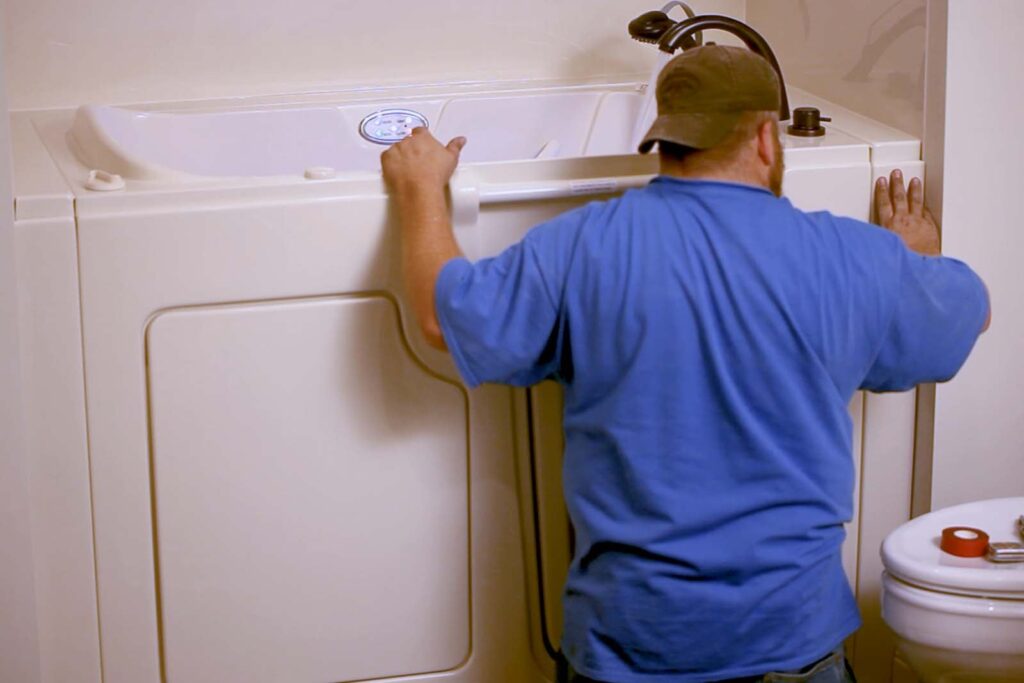
Choose a Walk-In Tub for Safer Bathing
Both walk-in tubs and traditional bathtubs have their own unique benefits, but they cater to different types of bathers and lifestyles. Traditional tubs remain a classic, versatile choice for the average user who simply needs a standard bathing setup. However, if you’re looking to reclaim your independence and comfort at home, a walk-in tub is the clear winner.
At Safe Step, we design our walk-in tubs with your safety and relaxation in mind. Request a free in-home quote to discover how a walk-in tub can improve your life.
